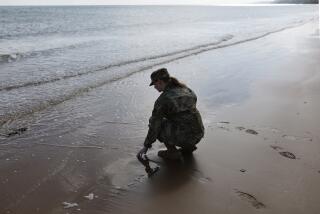‘War in Europe: 50-Year Legacy’
- Share via
I followed with avid interest your series on “The War in Europe: A 50-Year Legacy” (Part I, Aug. 27-31, Sept. 1) which evoked memories of my own experiences that summer of 1939. The bicycle trip that Rep. James McClure Clarke, took, as reported on Aug. 31, and the aftereffects of being stranded when war was declared were similar to those of other students who naively assumed that war would never occur. We had not been exactly brainwashed but, after all, we were aware of the Briand Peace Pact and there was always the League of Nations which would intervene, so we assumed.
My own mission was to visit relatives in Paris and then go on to Venice, Italy, in pursuit of research material I had begun in college. What startled me, during my first week in Paris, was to see on prominent display in window shops various gas masks for men, women and children of all ages and sizes! Then when the headlines screamed “Mobilization Generale,” my uncle shoved me into the last train out of Paris for points north with a group of soldiers bound for Amiens, ostensibly to defend the Maginot Line.
In Boulogne, facing the White Cliffs of Dover, a couple of other students and I found a driver with whom we fled across France, Belgium and Holland to catch a ship, the Statendam, bound for home, i.e., New York City. We skirted many roads that were blocked with trees and makeshift paraphernalia and on the Atlantic, we plucked up survivors from torpedoed ships. Many Americans were not so fortunate and were stuck in various parts of Europe for several months. And one of my classmates was on the Athenia.
Manhattan had never looked so good. I blessed my guardian angel and dedicated myself to the war effort as a junior editor in the Office of War Information.
SHERRY TERZIAN
Los Angeles
More to Read
Sign up for Essential California
The most important California stories and recommendations in your inbox every morning.
You may occasionally receive promotional content from the Los Angeles Times.













